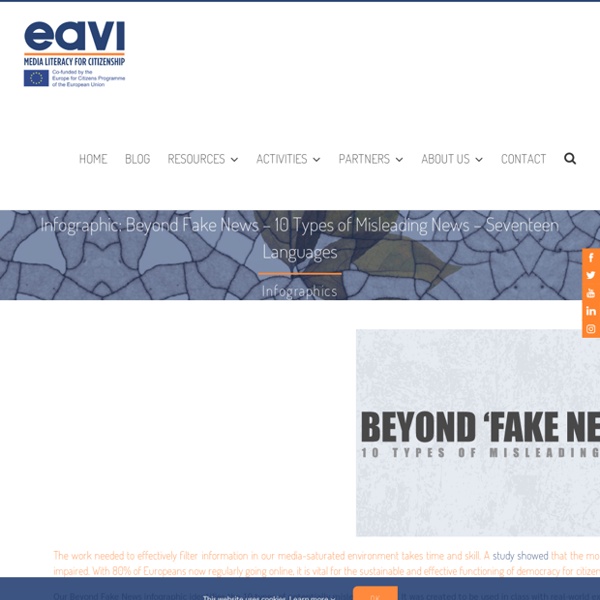Evaluating information
No information is entirely neutral. To use it effectively you need to know the context in which it was produced. Not all information is equally reliable; you need to choose the most authoritative sources. Remember that your responses to information are not neutral either - your own attitudes, beliefs and experience will affect how you receive it. Knowing which information to trust Who wrote it?
15 Most Reliable News Sources
Journalism, in essence, is the profession that deals with the gathering, production, and distribution of reports regarding recent political, social, criminal, and other societal/regional activities. However, contemporary News agencies have been known to spread propaganda, biased news, and “fake news.” With a plethora of news agencies in the market, it has become easier to spread fake news to promote political, social, or financial agendas of certain groups. Many news agencies get funding from certain political parties or corporations and in turn, spread the news (factual or otherwise) that promotes their agenda and favors it.
A Copyright-Friendly Toolkit
However fabulous Creative Commons and Public Domain content may be, sometimes you really need to use copyrighted material. Say you plan to comment on popular media or current events. For instance, you may be planning to critique the portrayal of Native Americans in commercial films. You are going to want to “quote” some commercial films like Pocahontas, Lone Ranger, and Dances with Wolves. If you are reviewing a book, you may want to share its cover art.
Is This Story Share-Worthy? Flowchart
GRADE LEVEL: Middle and high school TIME: Less than 30 minutes MATERIALS: Is This Story Share-Worthy? flowchart, either printed on large paper or displayed digitally (download); Is This Story Share-Worthy?
Neověřeno: Use this Chrome extension to know if you're reading fake or biased news
Have you ever clicked a link on Facebook, been taken to a site you've never heard of and wondered whether what you were reading was real, fake news or satire? Of course, you have. It's 2018 and the lines between all three are blurred more by the day.
The anatomy of a fake news headline
As confrontations between Black Lives Matter protesters and police erupted across the country earlier this month, some Oregonians, mostly older people, saw a Facebook ad pushing a headline about how a Republican politician “Wants Martial Law To Control The Obama-Soros Antifa Supersoldiers.” Needless to say, there was no army of left-wing “supersoldiers” marching across Oregon, nor were former president Barack Obama and billionaire George Soros known to be funding anything antifa-related. And the politician in question didn’t actually say there were “supersoldiers.” The headline, originally from the often-sarcastic, progressive blog Wonkette, was never meant to be taken as straight news. Original story published by Wonkette with tongue-in-cheek headline. SmartNews ad on Facebook that presents the headline as fact.
15 apps parents should look out for on their kids' phones
With several recent reports of arrests made after online predator and human trafficking stings, law enforcement officers around the country are reminding parents about potentially dangerous apps their kids could have access to. A couple of weeks ago, the Sarasota County Sheriff's Office said 25 people were arrested during an operation targeting online predators. Sheriff Tom Knight said all of the men arrested utilized "the internet and mobile applications to contact the children to have sex."
How I Designed My Fake News Lessons Plans
I recently created a week-long unit designed to teach students about digital literacy in the age of fake news. It’s just the kind of unit that I would have loved to have taught when I was in the classroom, but I never would have had the time to do all of the research that is involved. (See a preview of the entire product by clicking here and then clicking on preview.) There is a lot of content when it comes to verifying tweets and understanding what to do when you come across fake news on Facebook and how to judge a news website and what a Twitter bot is and why we should care and so much more… I am used to teaching students writing skills or taking them through a close reading of a challenging poem, but this quantity of content is new to me.



